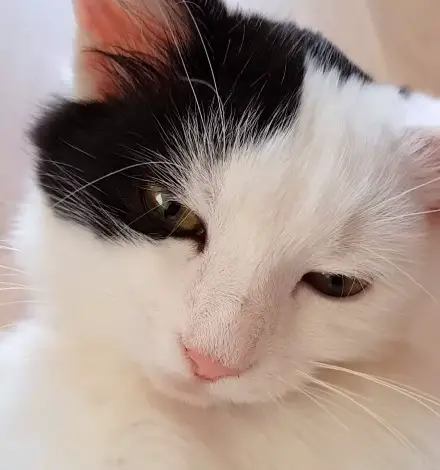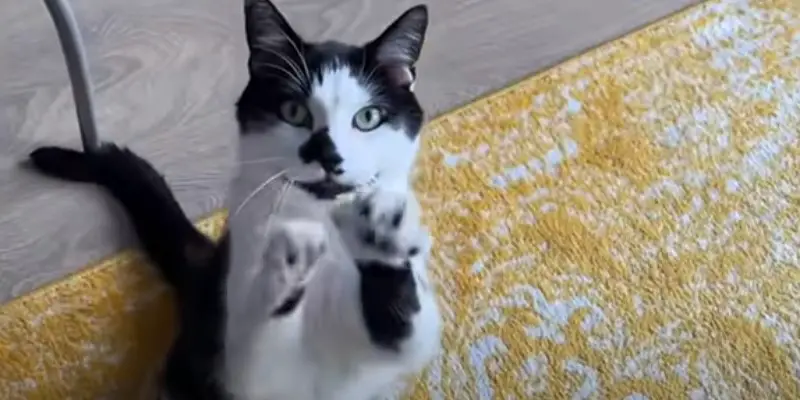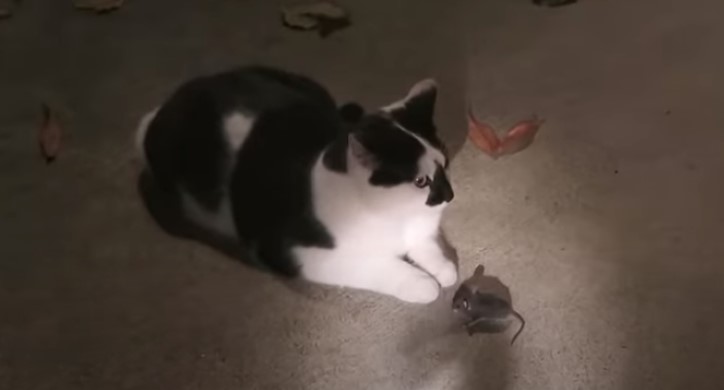A cat purr is a low, rumbling sound that a cat makes when it is content. The sound is produced by the cat’s vocal cords vibrating as they exhale.
Purring can also be a sign of pleasure, such as when a cat is being petted or scratched.
What is Cat Purring?
Purring is a low-frequency sound produced by some animals, most notably felines. It is typically a sign of contentment or pleasure, but may also be a sign of distress.
Purring is often seen as a sign of contentment and happiness in cats, and it can also be a form of self-soothing. Purring has been shown to reduce stress levels in cats, and it may also help them to heal from injuries and illness.
Why do Cats Purr?
Some cats may purr simply because they are content and happy, while others may purr in response to being petted or scratched.
Additionally, some cats may purr when they are nervous or anxious, as purring can help to reduce stress and promote healing.
Ultimately, each cat is unique, and they will purr for their own individual reasons.
Also Read: Why cats purr in their sleep?
Why Doesn’t My Cat Purr or Meow?
Cats are known for their vocalizations, and meowing is one of the primary ways they communicate with humans. However, there are several reasons why a cat may not meow as much or at all.

Individual Variation
Just like humans, cats have distinct personalities, and their communication styles can vary widely.
Some cats are naturally more talkative and meow frequently, while others are quieter. This variation can be influenced by genetics, upbringing, and temperament.
For example, a Siamese cat is known for being vocal due to its breed traits, while a more introverted cat might meow less.
Contentment
A cat that is content and comfortable in its environment may not feel the need to meow excessively. When a cat is well-fed, has a cozy place to rest, and feels secure, it may not have a reason to vocalize.
For example, a cat lounging in a sunbeam or cuddled up with its owner may simply purr rather than meow.
Non-Verbal Communication
Cats use a variety of non-verbal cues to convey their emotions and needs. These cues can include body language, facial expressions, and even scent marking.
For instance, a cat that rubs its head against your hand is showing affection without uttering a single meow. Cats may also use their tail, ears, and whiskers to communicate their feelings.
Age
The age of a cat can also play a role in its meowing behavior. Kittens tend to meow more as a way to get attention and care from their mother. As they grow and become more independent, their meowing may decrease.
On the other hand, senior cats may meow more due to age-related health issues, such as hearing loss or cognitive decline.
Health Issues
When a cat suddenly stops meowing or meows excessively, it can be a sign of underlying health problems. Cats are masters at hiding pain or discomfort, so changes in vocalization can be an important indicator.
For example, a cat with dental issues may avoid meowing due to mouth pain, while a cat with a urinary tract infection may meow excessively when using the litter box.
Environmental Factors
The environment in which a cat lives can greatly influence its meowing behavior. Cats may meow more if they are in a noisy or stressful environment. Conversely, a quiet and peaceful home may lead to less vocalization.
For instance, a cat living in a household with multiple loud dogs might meow less to avoid confrontation.
Habituation
Cats can also become habituated to their meowing behavior. If a cat meows and consistently receives attention or treats in response, it may learn that meowing is an effective way to get what it wants. Conversely, if meowing is consistently ignored, a cat may meow less over time.
For example, a cat that meows for food every morning may continue to do so if it is consistently rewarded with a meal.
Socialization
Early socialization plays a significant role in a cat’s meowing behavior. Kittens that are handled and interacted with by humans and other cats from a young age tend to develop better communication skills.
Cats that have limited socialization may be less adept at using meowing as a form of communication.
Specific Needs
Cats may meow to communicate specific needs or desires. For instance, a hungry cat may meow insistently to signal its hunger. A cat that wants to go outside may meow at the door.
Understanding the context and timing of a cat’s meowing can provide insights into its specific needs.
Emotional State
Cats may also meow to express their emotional state. They can meow when they are anxious, frightened, or in distress. Understanding the emotional context of a cat’s meowing can help owners provide appropriate comfort and support.
RELATED: What Does It Mean if Cat Purring?
Why Doesn’t My Cat Purr When I Pet Her?
There are a few reasons your cat may not purr when you pet her. One possibility is that she is not in the mood to be petted. Cats can be fickle creatures, and sometimes they just don’t want to be bothered.
Another possibility is that your cat is not feeling well. If she seems lethargic or uninterested in her surroundings, she may be sick. If your cat is not purring when you pet her, it’s best to take her to the specialist.
Why is Purring Important?
Purring is a cat’s way of showing contentment and happiness. It is also a sign of affection, and cats will often purr when they are being petted or scratched.
Purring is also thought to have therapeutic benefits for cats, as it can help to reduce stress and promote healing.
In addition, purring is simply a pleasant sound for many people, and it can be soothing to both cats and their owners.
Studies have shown that people who live with purring cats have lower blood pressure and heart rates, and they are less likely to experience anxiety and depression.
How Can You Encourage Cat Purring?
Different cats will enjoy different things. However, some ways to encourage purring include petting and scratching your cat in its favorite spots, offering its favorite foods or treats, and providing it with toys and playtime.
Some people also find that talking to their cats in a soft, calming voice can encourage purring.
FAQ’s
What kind of cat can’t purr?
Sphynx cats are hairless cats with very different vocal anatomy than other cats. Their larynx is not shaped in a way that allows it to vibrate, so they are unable to purr. Singapura cats are small, stocky cats that also can’t purr. The reason for this is unknown, but it may be due to a structural abnormality in the larynx.
Some breeds of Oriental cats, such as the Siamese and Balinese, may have difficulty purring. This is thought to be due to their narrow faces and small throats.
Why Does My Cat Not Purr Anymore?
There are a few reasons why your cat may not be purring as much as they used to. One reason could be that they are in pain and another reason could be that they are not feeling well. If your cat is not purring as much as they used to, you should take them to the vet to get checked out.
Why Did My Cat Stop Purring?
If your cat has stopped purring maybe she is sick or in pain, could be stressed or anxious, or could simply be tired. If your cat has stopped purring and you are worried about them, it is always best to take them to the vet to get checked out.
His professional interests include humane education, ethics, small animal behavior, and veterinary. As a pet lover from school life, having grown up with two cats and a dog. If he isn’t spending time with his friends and family, Justin enjoys traveling. Learn more about Justin here.
Find him on: Facebook
Read his latest ARTICLES


